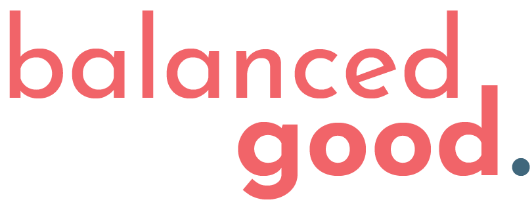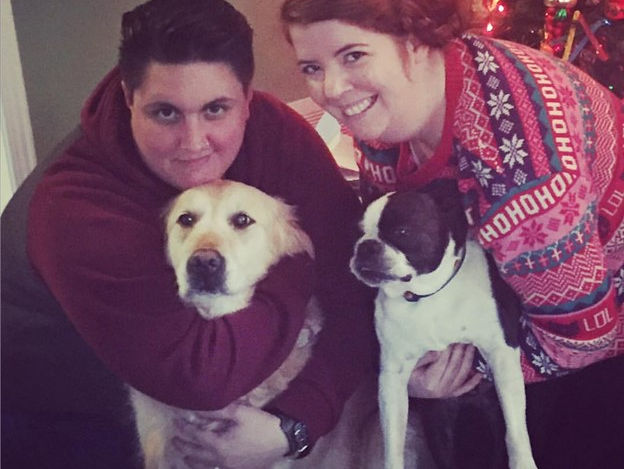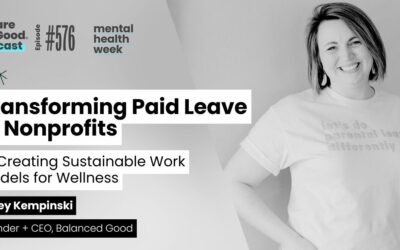It’s been a bit since I’ve been able to share a blog post…my conversations with incredible women are still happening, but let’s be honest, like you, I just feel like I have no extra bandwidth.
However, I realized that I am still having conversations with remarkable women, and I need to share these conversations with you. These conversations are what fuel me – so I want to pass that energy to you.
This past November (which feels like a lifetime ago) I had the opportunity share a panel with some INCREDIBLE Women at AFP Toronto’s NOT Congress and discuss how we can close the gender gap in leadership roles within the social profit sector. The panel included Nell Radley, Sandra Sualim, Lindsay Sweeney-Hockin, and was moderated by Jessica Wroblewski and Megan Tregunno.
The candid discussions we were able to have leading up to and during the panel presentation were very much needed, especially now, when women are being disproportionately affected with more economic stress (with higher rates of job loss), increased risk of gender-based violence, the pressures of supporting children in virtual schooling, working from home, decrease access to support services, and continuing to shoulder the emotional labour at home.
The virtual format of the panel discussion certainly allowed us to be more candid then if we were physically in the room with more than 350 individuals. Plus, the side conversations in the chat were so inspiring and authentic, while equally disheartening.
To say there were take-a-ways from this discussion is an understatement. I personally learned so much from this panel of incredible women, and it also reminded me of the innate privilege I have in being a straight, CIS-gendered, white woman.
Lindsay Sweeney-Hockin, one of my fellow panelists, and the Director of Development at North York Women’s Shelter, had so much to share with me when we chatted, and I’m really excited to share their perspective. From all my interactions with Lindsay, one clear thought stuck with me – at the core all of this “work-life-balance-blend” is the fact that everyone just wants to be seen as a whole person: professional, mother, member of the 2SLGBTQ community, or as a person of colour. None of these things are mutually exclusive.
For me, who I am as a mother makes be the professional that I am today; and being a professional fuels me as a mother.
Although my conversation with Lindsay varies a bit from my traditional posts, what good is this outlet if I can’t be an ally to all female-identifying persons and non-binary folks.
1. Briefly tell me about a day in the life of Lindsay Sweeney-Hockin.

Lindsay, her wife Megg, and their furry family.
I wake up at 5AM, let my dogs, Gus and Jordan out, feed them breakfast. Then I’m on the couch scrolling news, Instagram, and TikTok. My feed is chock-full of social activism, food hacks, Bridgerton (the musical not the Netflix show) and cute dogs. Then I look at my schedule for the day. After that, I contemplate going on the exercise bike. Sometimes I do or sometimes I go on a long walk. If it’s a day I have to go into the office, I’m out of the house by 7AM and take a relaxing back road route to the office. If I’m working from home (usually three times a week), I roll into my home office and open my laptop by 8AM. I like the early start because it gives me about an hour to check off some key items on my to-do list before the requests start piling in at 9AM.

Lindsay and Megg’s dogs Gus and Jordan
Most of my workday is usually spent on Zoom with mini breaks to chat with my wife Megg who also works from home. For dinner, we have been cooking the home-delivered meal kits and it saves time and prevents the classic married couple argument of “what’s for dinner?”. After dinner, I have a nightly ritual of facetiming my mom and twin sister and then I wind down with some TV teatime with Megg.
2. Typically, I feature my blog posts on parents and how they manage a work-life blend, so today’s conversation is a bit different. As I mentioned in my intro, you and I met when I had the pleasure of sharing a panel discussion with you (and several other amazing leaders in our sector) at AFP’s NOT Congress. In our session, Closing the Leadership Gap: A Conversation with Women in Fundraising, we all shared our varying background on our journey to leadership, can you share a little bit of your leadership journey with everyone?
My commitment to being a leader has actually stemmed from always feeling like I had to make space for myself and validate myself and my existence.
When I was 7, I was diagnosed with a learning difference, and then at 21 came out to myself and very religious family. I think it was having to constantly advocate for myself to finding my own place in the world that made me a leader.
I always had to fight for my own place in some way, either fighting to prove my intellect and be considered “smart enough” or defending and validating my existence as a queer person. I learned to be the kind of leader I am because I looked around and didn’t have a model of leadership that I needed to see me as whole person. I had to become one.
I wanted to build a support system that built people up and allowed them to be who they are and recognized their strengths- a leader that could make space for EVERYONE to grow and continue to challenge the systems that prevented them from being where they want to be in their careers.
When I started in fundraising, I always wanted to become an Executive Director. To me, that was a true leader. However, as I continue to learn and grow, I think I’ve changed my thinking. As I continue to understand my privilege and I become much more self-aware of what spaces I’m allowed to occupy as a white person. Grounding myself in the pursuit for justice and equity, as a leader, I want to continue to create space all the while ensuring I don’t take up space for BIPOC. Especially as we look at the communities our organizations service. We must ensure that our leadership reflects that.
One thing that we found as we all prepared for our panel discussion was the limited availability of data and research regarding the 2SLGBTQ community and their leadership roles in our sector. The research we could find noted extensive discrimination and barriers to access leadership roles. Is this true to your experience as you worked to move towards leadership roles?
This is a complex question to answer. So my first reaction is to say, yes and no. The specific research you’re referring to was about 2SLBTQ folks of colour who have vastly different lived experience than I do. What’s important to note is that within the 2SLGBTQ community, I have a lot of privilege. I present as femme, I can pass as CIS gender straight women, and I’m white. My queerness isn’t immediately visible so to speak and this allows me closer proximity to power. For 2SLGBTQ folks of colour, the intersections of their marginalization provides them a much more oppressive form of discrimination that is much more harmful than what I have experienced.
But, have I experienced discrimination in our field? Absolutely. Before I even entered the industry as a professional, in my education at Humber College in the Fundraising Program, I had a teacher, (a professional fundraiser) that outright refused to support the charity I had chosen because it was a 2SLGBTQ advocacy organization.
I had to sit in a room with him as he explained with a straight face and no trace of shame or self-awareness of how deep his homophobia was, that he could not support this organization because it was against his moral values. It was like being retraumatized. And this was at the beginning of my career.
When we threatened to make a human rights complaint and he was called out by Humber’s Program Director, of course he changed his tune. But even then, I had to make a concession and edit the organization’s mission as a stand against bullying of ALL youth instead of LGBT youth to make it palatable for the cis-het community. I think the structural violence enabled by people in leadership roles and ensuring that everything is made for the white, straight, cis-gender community has been a constant I have to fight against for the duration of my career.
If I reflect on when this decision to commit to my values and to fighting injustices occurred, this moment at Humber College stands out. It was the moment where I decided that I would not change who I was and I would always fight for spaces for other folks to be who they are freely.
3. Where have you personally seen progress in our sector as it relates to the 2SLGBTQ community and leadership roles? As a leader, how do you support growth and support in these roles?
I think when we talk about diversity, most organizations and companies think of it as ticking off a box. When we talk about diversity in leadership, companies and organizations will often place “model minorities” of different marginalized groups to convey an image of diversity and inclusion to themselves and the general public.
When I say model minority I mean for queer people, the white, gay cis man, for black people, a lighter skinned black person, for women a hetero, cis, usually white woman. They place model minorities in proximity to power to give the illusion of minorities having power but proximity to power is not power. It’s like Audre Lorde writes in Sister Outsider, “the master’s tools will not dismantle the master’s house.”
So if we are really trying to think about equity and justice (oppose to diversity and inclusion) and are committed to these values, we need to start thinking about who is most oppressed in marginalized communities and give them the access to these roles. But also, give them access to the resources and support they need to flourish.
I think to continue to move forward in creating more Equitable leadership you need to learn about the community and expand your search pools and ensure your leadership team is reflective of the community you serve. Question why these folks are not in your search pools, think about what barriers are in place, what barriers are you yourself complicit in making? Because I promise you, we are all complicit.
You also need to ensure we are building these future leaders. Help folks get on a leadership track, as well as challenge the barriers that are in place for people especially if you are a person with privilege. We need to have hard conversations to make these changes, we can not be afraid to challenge or be challenged.
4. My blog typically focuses on working parents and the challenges they face, but I knew sharing your perspective on your leadership journey was important. Now, as a leader, are there things you do to support parents?
In my current role at North York Women’s Shelter I am very fortunate to see strong female leadership surrounding me and a culture that embraces people as their whole self. We embrace a flexible environment and have even found ways to support working parents throughout COVID. Prior to COVID, it was not out of the ordinary for a parent to bring in a sick child, if work needed to be done.
However, I also have a lived experience that helps me better understand some aspects of parenting. My partner and I went down the path of starting our own family – and for those who have experienced work with fertility clinics, this is an experience of numerous (and time sensitive) expensive appointments, and ride on an emotional roller coaster, while sometimes having to keep this all private from your workplace . Throughout this journey it made me explore and question the definition of maternity/paternity leave. Explore how organizations can better support folks on their unique journeys to parenthood. It’s made me question the role of primary caregiver and how that individual is supported and what we need to do to better understand the needs of being open and willing to hear from employees and not question them when they are telling you they need something.
Another thing I’ve learned throughout my path to leadership is the importance of hiring and ensuring you can support someone from a marginalized community if you are hiring them. Don’t assume they have the same privilege as you. I have been a diversity hire and I have been disappointed when managers and organizations fail to meet my needs and have experienced isolation, prejudice, and discrimination. If we are going to commit to doing things differently, there is a lot of work you need to commit too. The work doesn’t end when the person signs the contract, it’s a commitment to ensuring they feel supported at every level.
5. COVID has really shifted what “work-life balance” looks like. Overall, how do you think the social profit sector is doing in terms of creating a work-life blend culture? And what do you hope for or expect for our sector post-COVID?
I mean I think work life balance is relative. It is not a destination but something we need to keep working at. I am very spoiled in my work as at my organization, health and mental wellness of the employees are always a central priority. However, I think as we move out of COVID our world will have vastly changed and I hope that the recent investment in wellness and mental health support doesn’t end.
6. In your opinion, what are the top 3 things our sector needs to do to help empower members of the 2SLGBTQ community as leaders?
- Understanding that we all come in different packages. That a white CIS gender gay man is only a small representation of our community.
- Ensure unique voices are at the table or throw out your table and make a new one.
- Do your homework an ensure that your workplaces will do less harm and work against perpetrating the systems of oppression that exist.
7. What is on your current reading list?
I am mostly a podcaster these days. Here’s some that are constantly on my playlist:
- Still processing
- Nice white parents
- The ethical rain maker
- Unlocking us
- Dare to lead
- Dear Prudence
- Ear Hustle
8. And lastly, when you manage to find a few moments for yourself, what is your go to self-care activity?
A bath, a walk in the York Regional forest. Watching a movie under a weighted blanket





